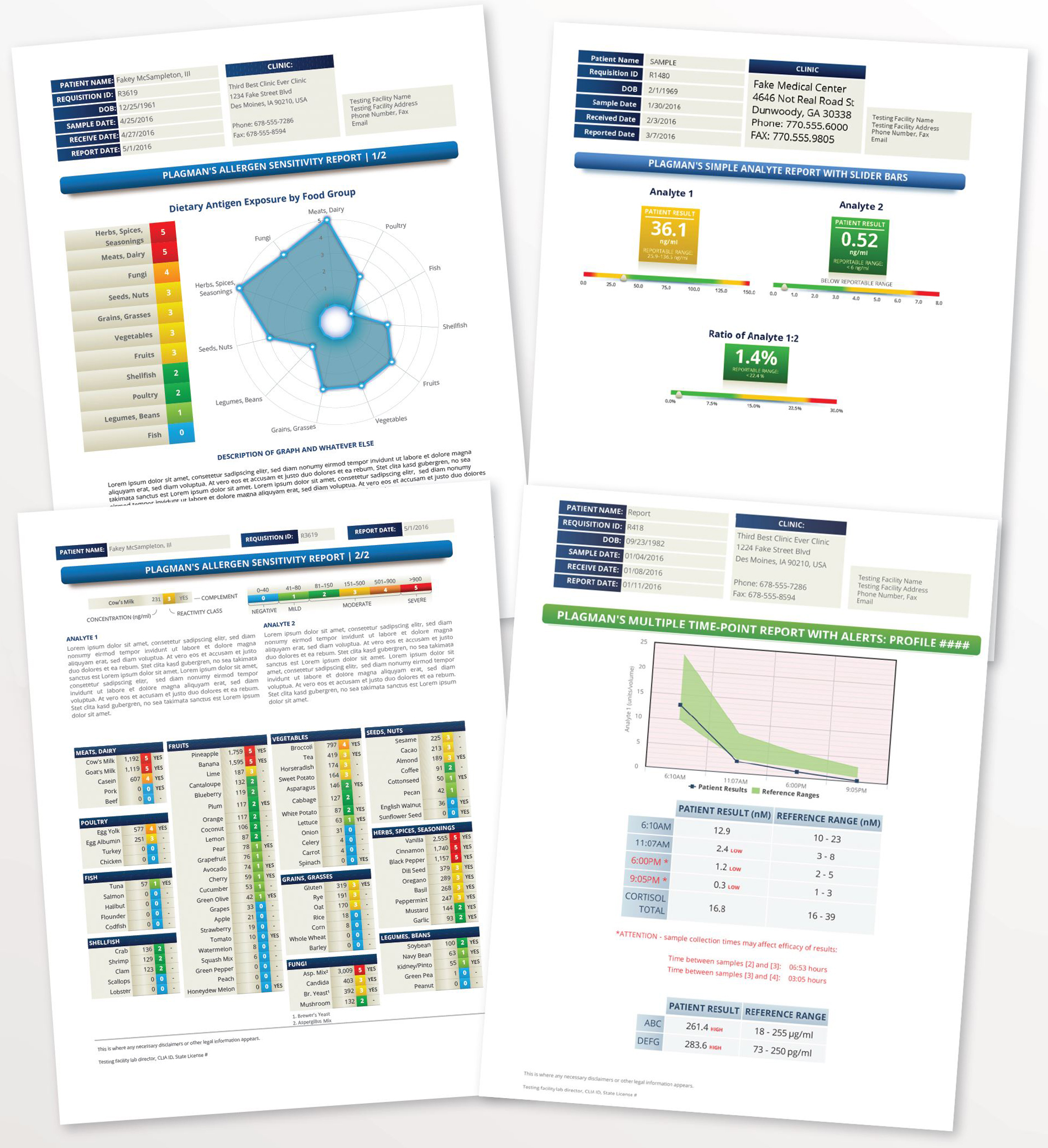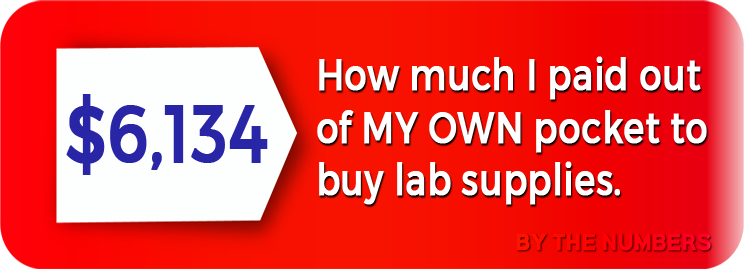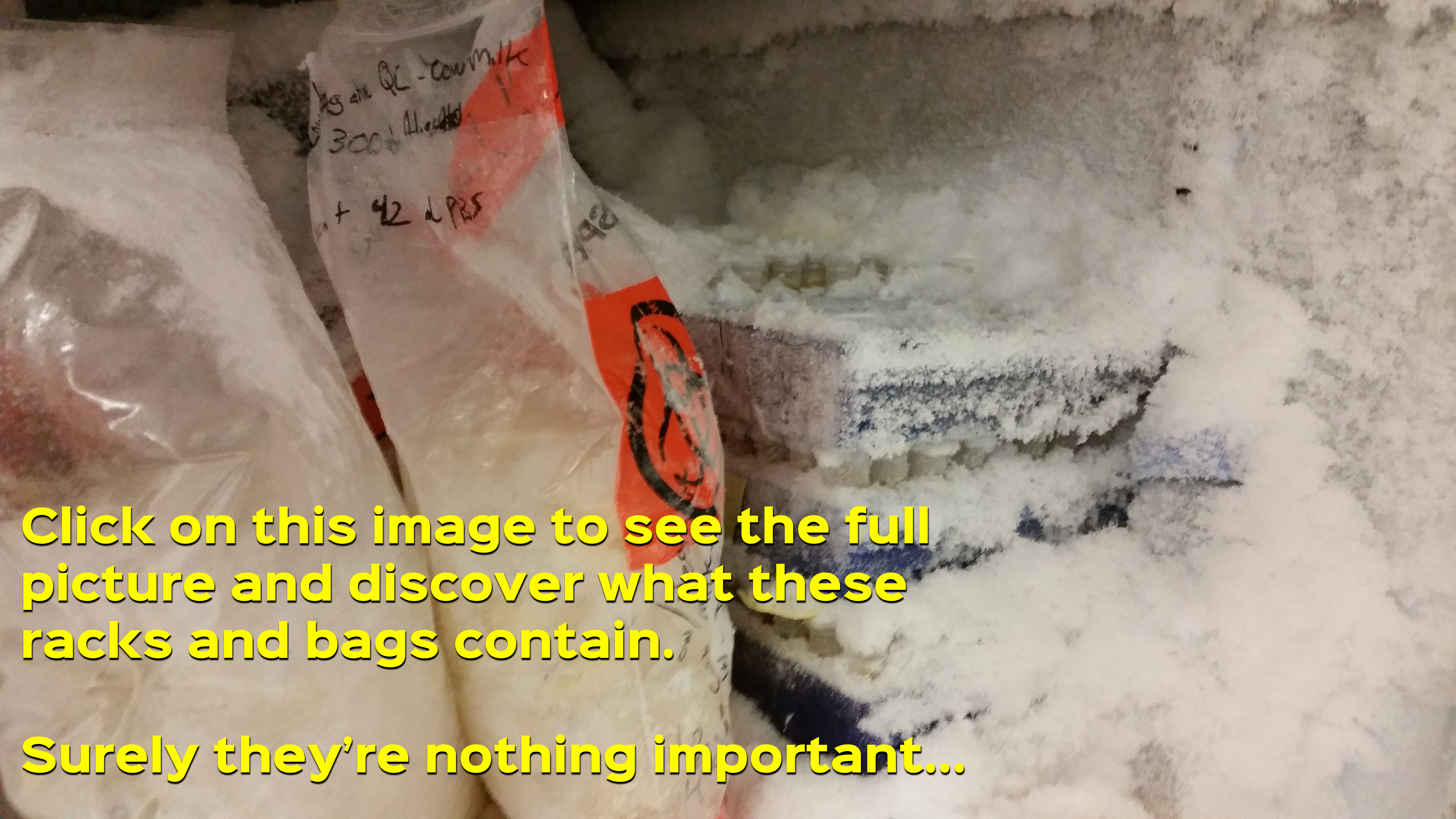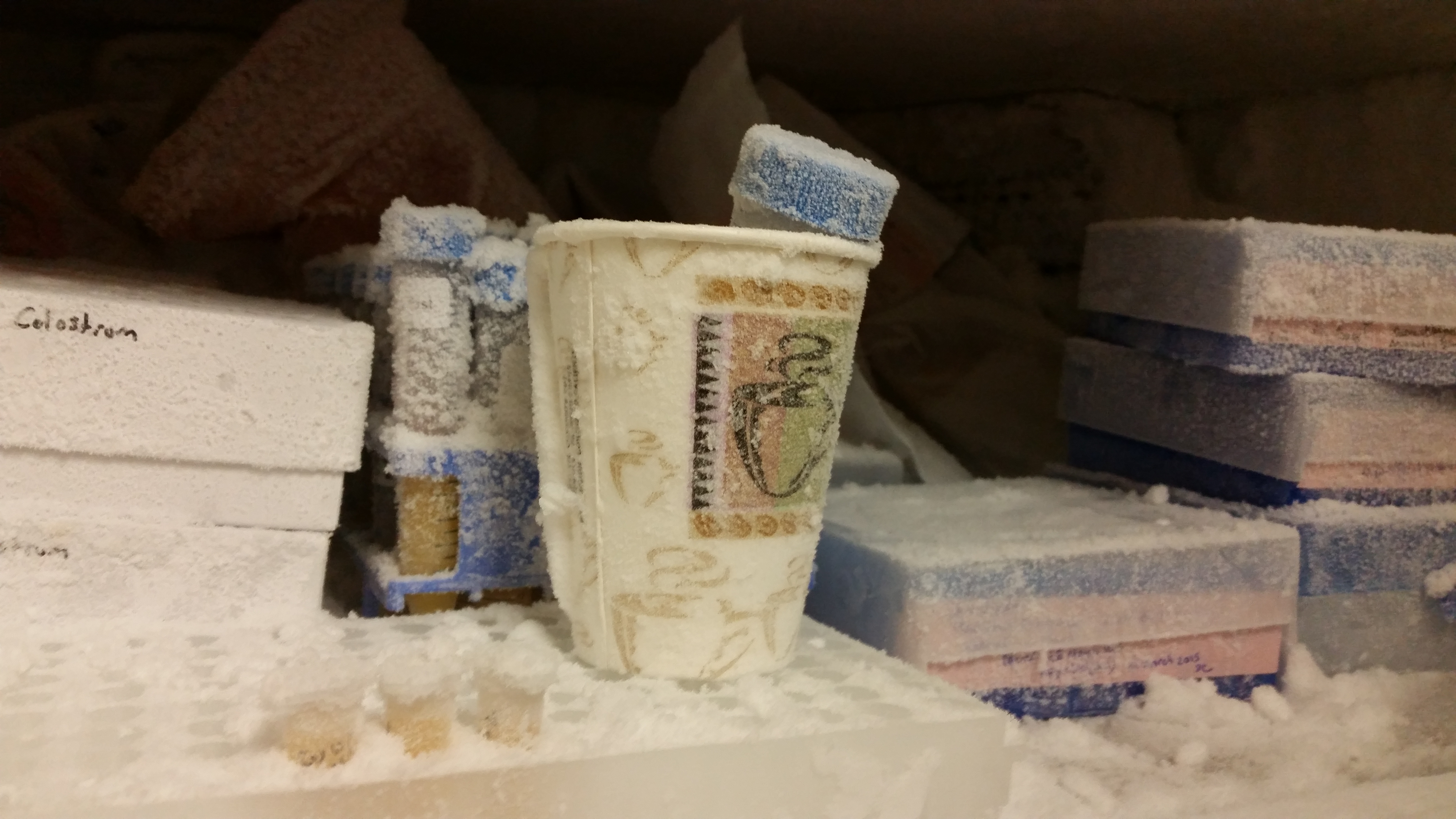
Supervised lab techs and managed daily operations.
Unless they made a conscious effort to never let anyone know
otherwise, Dunwoody Labs was the first and only lab in which any of
my subordinates (or anyone in the company) had ever worked. They’d
developed some... not great habits due to lack of proper guidance,
but my patience and their willingness to adopt better ways of doing
things upon being exposed to them prevailed (for as much as I could
get through in the time allotted).
As for lab operations – I took care of every detail and made sure we
had everything we needed to keep the lab operating as efficiently
as it could under the circumstances. I even spent over $6,000 of
my own money to purchase supplies when necessary [reasons for said necessity redacted].
I had a mix of veteran lab techs (well, veterans of this one lab) and employees with no lab
experience who we often needed to lend the techs a hand. Those
with no lab training were much easier to train. The techs who had
been there for awhile were hard workers, but they’d never had
proper leadership, and they’d never been shown the right way to do
things in a lab. Teaching them more efficient, proper techniques was easy
enough because I was able to demonstrate that the changes I
was suggesting were, in fact, superior (and HUGE time-savers, which
meant more productivity and less unnecessary late nights). But tasks
whose benefit wasn't immediate or obvious, even something as simple as proper
labeling – those took longer to stick. Same with proper storage and
organization of samples. But I eased them into it.
Redesigned all test reports and managed all reporting
Visually, the lab’s test reports left a lot to be desired, and the
method for making them involved manually entering results one
number after the other. This was slow and carried an unacceptably high
risk of human error (with no double-checking, digitally or manually). With the help of a freelance graphic designer
(who I found on upwork.com), we (meaning, he and I) redesigned all of the reports. This wasn't part of my job, but I thought I would be at this company
for the rest of my career, and every ugly report that left the building with our lab's name on it hurt the lab, and therefore the business, and therefore
my future.
I even had to make my beautiful reports semi-manually in a way I would never advise or do again, but circumstances...

Established quality control (criteria, tracking data and trends, ordering repeats)
In short, I immediately began collecting every piece of data we generated, and even relied on researching the analytes and their healthy ranges, myself. I learned a great deal about histamine, DHEA, and zonulin, and became the resident expert on cortisol and the adrenal stress test. Since I had commandeered reporting and was implementing my new, vastly improved report templates along with results imported from a LIMS-provided text file, no result got reported without my reporting it. Thus, I was able to keep track of all of the data and reject anything that didn’t pass my QC criteria (ask me why I couldn’t use the "criteria" in the “SOP”!).Directed LIMS design and integration (including barcode adoption)
As soon as I learned that, 3 months before I joined they'd signed a contract for a new LIMS
(now 6 months after the fact), I immediately took charge of having
it replace the database they’d been patching for years that crashed frequently and everyone complained about. I
understood how much of a game-changer this system could be.
I spent so much time working with the programmers that when my
daughter was born, first I texted a picture to my family,
then to the programmers via Slack (the application
we used to instant message since we spoke so often).
I’ve always been the most productive member of any
lab. You need 4 widgets today, I’ll have 16 by early
afternoon. And at that time you can expect me
to bug you for more work. That is, until we run
out, which has happened at EVERY clinical
lab in which I’ve worked.
But as fast as I am (and make no mistake
– my speed comes from organization and
pure efficiency, not rushing), I’m always at the
mercy of how the lab deals with information.
Sample tracking information, lot numbers, dates,
times, notes, calculations, results – if any of this is done on
paper, or even in Excel, and if files are being emailed back-and-forth, and if I'm hand-labelling 100s of tiny 0.2-ml PCR tubes every day, the entire lab is at the mercy of those inefficiencies. Programming can
make everything better. That's why I'm working my tail off to learn how to do it, myself.
Uniflow by UNIconnect was the LIMS that, after I had been employed
for 3 months, I learned had been contracted six months earlier, but no
one ever moved on it. I called them immediately.
I quickly learned that Uniflow uses programming to customize the
LIMS to your workflow. At last – I was going to be able to design the
most efficient lab in the world! Actually, this was true for the genomics lab since I was the one who would be responsible for launching the department, running every sample, and generating reports (to be reviewed by a consultant before being released).
Transitioning the lab over to this new LIMS,
complete with barcode labels and scanners, two products of which
I quickly became an expert (ask me about my favorite scanner!), was an awesome and fun challenge.
The workflows I did get a chance to create were so efficient it gives
me goose bumps. The genomics workflow I designed was a work
of art. Except, the only time I sort of got to use it (the final test run)
was the last time genomics samples were run. And
the exemplary workflow I designed for the food
sensitivity test workflow, I never got the chance to implement. They still
haven’t even tried to use it. It stored every piece of information you could possibly need (essential for trouble-shooting and QC), it tracked every plate and every tube at every step, it stopped you any time you were using the wrong reagent (or anything with a barcode) - it would've been magnificent.
Launched Genomics department, designed its extremely efficient LIMS workflow, wrote the SOPs, did all validation testing, and performed all patient testing (with Autogenomics’ InfinitiPLUS)
My first task when I started at DL was to finally get the Genomics
program going. The previous regime had collected samples from
patients and performed 100s of validation runs costing $10,000s and resulting in binders of
printed results that didn’t need to be printed in the
first place, but then they encountered a DNA extraction problem. Not
a surprise since Autogenomics recommends a Qiagen spin column kit
(or its equivalent) and they decided to set their Stratec kit aside and
go with a home-made phenol-chloroform extraction.
I opted to follow the recommendation of the company that wrote
my genomics’ protocols and went with the Stratec kit that was
already there. I also compared it to free samples of Qiagen’s kit. And
then one from Isohelix. And another from IBI Scientific. And then
I tested the swabs, as well as various swab techniques, and a few
other variables to determine the best approach.
What I found was that I was too good at extracting DNA, and that
Autogenomics’ recommended amount of DNA was way too high (I
had the LIMS designed to collect pass/fail data and determine optimal
concentrations – never got to use it, though).
Even though I had to teach myself how to operate the machines (with
the help of Autogenomics’ tech support staff who I got to know very
well) in order to do the remainder of the validation runs, I insisted on
going out to San Diego to be properly trained, since no one at the lab
knew how to operate the machines (despite an entire team going out to San Diego for just that reason several months, earlier).
Since I was so far ahead of the curve, they also trained
me on the HTS (High Throughput System), which, at the
time, I thought would be our lab’s next step. In fact, it
should’ve been the initial step.
The workflow in the LIMS was a thing of beauty.
Repeats made it far more difficult than it needed to be,
but the company gave me their two best programmers practically fulltime,
and they knocked out a heck of a system in a few weeks. Given
that one chip cost $30, and each sample required 5 chips, tracking
every last detail to optimize the test was vital.
Running the samples was a cinch. My workflow was so efficient that
it sort of caused a problem. We had 4 thermal cyclers for 5 tests. But
one of the test’s PCR protocol only took 43 minutes. So I wanted that
one to be done first so that by the time I finished setting up the 5th PCR
plate, that first thermocycler would be available. Problem was, without
even trying (and allowing myself to be distracted by everyone needing
me every 5 seconds), I set up all five PCR plates in 21 minutes. So the
last one had to wait. A good problem to have.
Some of the PCR protocols took a couple of hours, and the Infiniti Plus took
5-8 hours, so I had to come back at various times throughout the
night. Fortunately I lived 3 minutes from the lab and I rarely sleep.
Managed inventory and purchasing; set up new vendor accounts (saved $10,000s) and negotiated great deals,
Found alternative materials for most popular test, saving company well over $86,400/year
I love inventory. I have no idea why, but I thoroughly enjoy keeping
the workplace (and my home) well-stocked, and I’ve never run out of
an item. Even when PCR tubes were on a 3-month backorder, that’s
how far ahead of the game I was, and always am. In short – anytime
someone other than me makes a purchase, the company is throwing
money away. That’s nothing against the purchaser in that hypothetical;
sometimes taking 10 minutes to find a 2-pack of scissors that’s $1 less isn’t
worth it. But time is something I never run out of. No matter how
busy I am, unless someone else is
occupying it, I always have time.
Besides, it’s fun for me. I like
finding the best deals. And
since I get about 25 emails a
day featuring deals from all over the
internet, I could stock up when the
price is right and be set for however long
my storage capacity permits.
Sales reps learn very quickly that, whether it’s a pair of scissors or a
$47,000 machine, I’m going to do my due diligence and find the best
deal for any given product, and I’m never going to overpay. They also
know I’m always going to be straight with them and not play games.
As I tell everyone I do business with – I’m always going to be honest.
Even if it might be in my best interest to conceal the truth, I’m not
going to. And not because I want to consider myself morally superior
to anyone, but because when I say “I don’t think my boss is going to
let me buy that unless I can get a deal on it,” I want them to know
that I’m not playing hardball, that’s a fact.
Relationships with sales reps are symbiotic. When I buy something,
both sides are getting what they want. In that regard, we’re on the
same team. They’re also my best resource regarding products that
might benefit the lab.
The sales rep for Fisher knew me from my previous job and allowed us
to get the ball rolling on a Net 30, even though we should’ve been a credit card only account. That $7,500 line of credit kept the lab going.
And they’re still enjoying the unprecedented savings she gave me on several items.
The other important vendor I established a relationship with was Phenix Research Products. It started with my wanting to find a good price on 96-well PCR plates that I could break off into sections. But another thing about me – if a rep takes the time to send me a sample, I’m going to find the time to try it out. I inquired about some microtiter plates, they sent me some samples, and instead of paying $300 for a case of 60, they’re now paying $56 for a case of 40. When I left, the order was for 50 cases per month (i.e. 2,000 plates).
So instead of $5/plate, it’s $1.40/plate. That means each month’s shipment *ahem* thanks 100% to me is $2,800 instead of $10,000. Thus, in a year, they’re going to save $86,400 (more than my salary) simply because I researched different plates and tested them out. That’s just one item. Does your lab like saving $100,000 with no effort...?
Created instructional video (for saliva collection for the adrenal stress test)
An amateur videographer shot one take of the accessioner reading a “script” for the first time, put in some text and simple, low-res pixelated graphics, and presented it as the instructional video for showing patients how to properly collect saliva for the adrenal stress test.
I was a professional video editor in LA, and I have a voiceover actor who always does a great job with quick turnaround, so I made the video, myself. It’s fantastic.
This may not seem relevant to your organization, but it’s another example of my versatility, and commitment to the company (and high standards). I couldn’t allow that other video to be out there in the public, dragging the company’s name down with it. Anyone who saw that video would immediately think the worst of our lab. Who wants their tests run at a lab with absolutely no standards of quality? I know I shouldn’t speak negatively about the other video, but it’s really, really bad. Some people in the organization didn’t care if something
was good or not, they just wanted content out there. That’s a terrible
approach. You only get one chance to make a first impression. No
impression still leaves that chance of a first impression alive. But once
you put something terrible on display and people see it – there’s no
undoing the association in their mind of that terrible-ness with the
organization.
Fortunately I caught this one before anyone saw it. I wasn’t always so
lucky. I literally had to start putting crude words (like fart, poop) as
watermarks on documents so they wouldn’t be distributed en masse. You may think that's extreme, but apparently there was a big issue where someone started distributing a new req form that was only a draft (I was foolishly not a part of this project, hence the crisis being allowed to occur).
I like to get as much feedback as I can from whomever I can so I want
people to see a given document at each stage, but I learned a lesson
the hard way. I’d send out a first draft and a week later, even though
I’d since revised it, I’d find a stack of
the first draft printed on really nice paper.
This is also a prime example of my versatility. I can communicate with
any department. I understand IT, graphic design, marketing, video
production, the laboratory, purchasing, inventory, sales – there are
really only two things I can’t do on the job: write code (yet) and draw.
Please don't ask me to draw.

Managed and reorganized molecular lab’s inventory of consumables and reagents
I took over the lab’s organization – stuff was everywhere, space was
being wasted, no one knew what was in stock and what wasn’t – I
don’t work that way.
I can still tell you what’s in every drawer (or what was). And while I
can’t even remember how many times we ran out of a consumable
(because people constantly use the last of something and don’t tell
anyone), once I put myself in charge of inventory, it never happened
again.
My most popular achievement was probably the re-organization of
the primers (and autoclaving for the whole lab – ask me about it!).
You had half-full boxes of diluted primers spread out over four 4x4
racks. I consolidated and re-arranged. The most commonly used
primers shouldn’t be in the back of the rack that’s a pain to pull out,
in a box with a gene that isn’t even being tested, anymore. You might
be surprised how much time (and frustration) is saved by having
all of your days’ primers at the front of the fridge, in a box you can
grab without having to prop the door open with your foot and do a
balancing act.
The biggest problem was that the boxes were such a mess, techs
wouldn’t know which primers were the right ones. And for some
reason they wouldn’t ask…
I don’t mean they wouldn’t ask me – I didn’t know which primers were
correct for 150 genes I’d started learning about a few months earlier.
They wouldn't ask anyone.
I should also mention that this was 2
years ago and that this lab has undergone some pretty impressive changes,
particularly becoming CAP-certified.


